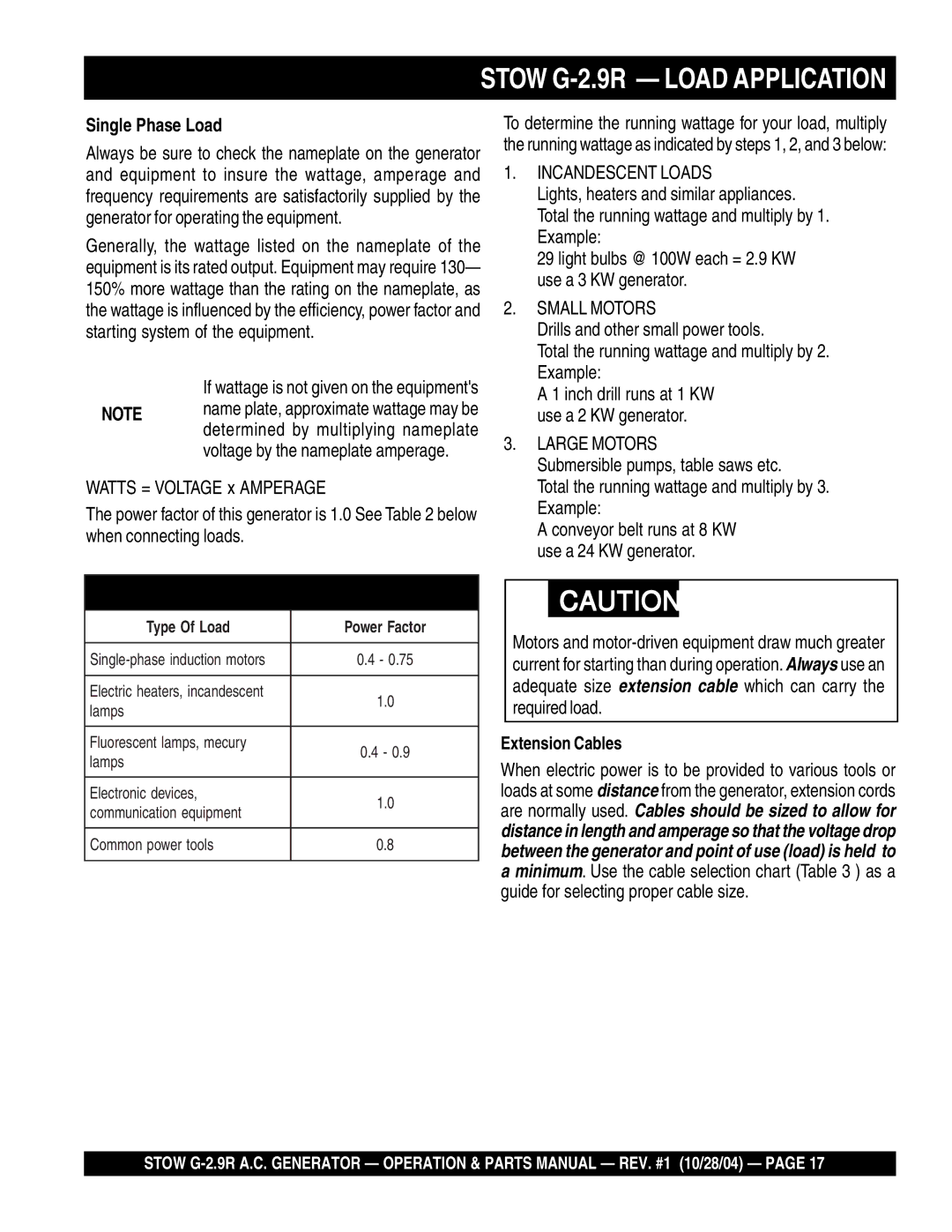G-2.9R specifications
The Stow G-2.9R is an innovative and highly versatile piece of equipment designed for a variety of applications, making it a valuable asset in various industries. This unit stands out for its unique combination of power, efficiency, and user-friendly features, ensuring that it meets the demands of both professionals and casual users alike.One of the main features of the Stow G-2.9R is its robust engine, which is designed to deliver reliable performance. With a powerful output, the engine allows users to tackle demanding tasks with ease, whether it’s in landscaping, construction, or maintenance jobs. The efficient fuel consumption of the G-2.9R not only reduces operational costs but also minimizes environmental impact, making it an eco-friendly choice for users conscious of their carbon footprint.
The Stow G-2.9R is equipped with advanced technologies that enhance its performance and usability. The integrated electronic controls provide precise management of operations, allowing users to finely tune the machine's settings according to specific requirements. This level of precision is particularly beneficial in applications such as turf management or industrial cleaning, where different surfaces and conditions may require specific adjustments.
Another noteworthy characteristic of the Stow G-2.9R is its compact design. Built for maneuverability, this machine can easily navigate tight spaces without sacrificing power or efficiency. The lightweight construction allows for easy transportation, making it suitable for different job sites. Its geometrically designed chassis ensures stability and balance during operation, enhancing safety for the user.
Furthermore, the G-2.9R also boasts ergonomic controls and comfortable handling features. The adjustable components allow users to customize their experience, which contributes to reduced fatigue during extended use. Safety features are also a priority, with mechanisms in place to protect the operator and nearby workers from potential hazards.
Durability is another key aspect of the Stow G-2.9R, as it is built with high-quality materials that withstand wear and tear in challenging working environments. The machine is designed for longevity, making it a cost-effective investment for users.
In summary, the Stow G-2.9R combines power, efficiency, advanced technology, and user-centered design to deliver exceptional performance across a wide range of applications. Its adaptable nature ensures that it meets the varying needs of users, positioning it as a reliable choice in the marketplace.

